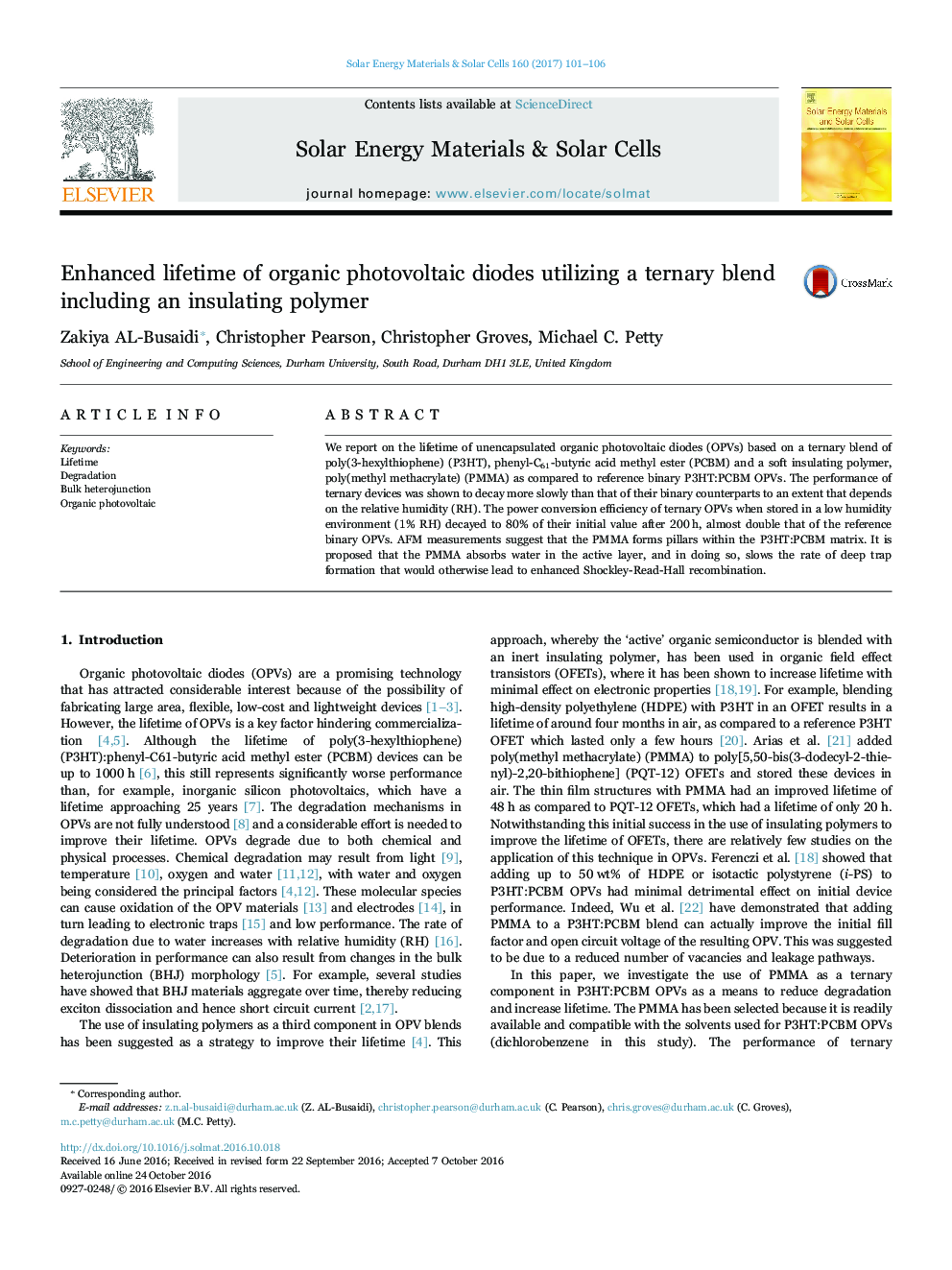| Article ID | Journal | Published Year | Pages | File Type |
|---|---|---|---|---|
| 6457312 | Solar Energy Materials and Solar Cells | 2017 | 6 Pages |
â¢The addition of PMMA enhances the stability of P3HT:PCBM photovoltaic devices.â¢PMMA changes the film morphology and forms pillars.â¢PMMA absorbs water in the active layer.â¢It proposed that the PMMA slows the rate of deep trap formation.
We report on the lifetime of unencapsulated organic photovoltaic diodes (OPVs) based on a ternary blend of poly(3-hexylthiophene) (P3HT), phenyl-C61-butyric acid methyl ester (PCBM) and a soft insulating polymer, poly(methyl methacrylate) (PMMA) as compared to reference binary P3HT:PCBM OPVs. The performance of ternary devices was shown to decay more slowly than that of their binary counterparts to an extent that depends on the relative humidity (RH). The power conversion efficiency of ternary OPVs when stored in a low humidity environment (1% RH) decayed to 80% of their initial value after 200Â h, almost double that of the reference binary OPVs. AFM measurements suggest that the PMMA forms pillars within the P3HT:PCBM matrix. It is proposed that the PMMA absorbs water in the active layer, and in doing so, slows the rate of deep trap formation that would otherwise lead to enhanced Shockley-Read-Hall recombination.
